Murphy - Muddling through in Madagascar
Here you can read online Murphy - Muddling through in Madagascar full text of the book (entire story) in english for free. Download pdf and epub, get meaning, cover and reviews about this ebook. City: Madagascar;Madagaskar;Woodstock;N.Y, year: 2012;1989, publisher: The Overlook Press, genre: Home and family. Description of the work, (preface) as well as reviews are available. Best literature library LitArk.com created for fans of good reading and offers a wide selection of genres:
Romance novel
Science fiction
Adventure
Detective
Science
History
Home and family
Prose
Art
Politics
Computer
Non-fiction
Religion
Business
Children
Humor
Choose a favorite category and find really read worthwhile books. Enjoy immersion in the world of imagination, feel the emotions of the characters or learn something new for yourself, make an fascinating discovery.

- Book:Muddling through in Madagascar
- Author:
- Publisher:The Overlook Press
- Genre:
- Year:2012;1989
- City:Madagascar;Madagaskar;Woodstock;N.Y
- Rating:5 / 5
- Favourites:Add to favourites
- Your mark:
- 100
- 1
- 2
- 3
- 4
- 5
Muddling through in Madagascar: summary, description and annotation
We offer to read an annotation, description, summary or preface (depends on what the author of the book "Muddling through in Madagascar" wrote himself). If you haven't found the necessary information about the book — write in the comments, we will try to find it.
Murphy: author's other books
Who wrote Muddling through in Madagascar? Find out the surname, the name of the author of the book and a list of all author's works by series.
Muddling through in Madagascar — read online for free the complete book (whole text) full work
Below is the text of the book, divided by pages. System saving the place of the last page read, allows you to conveniently read the book "Muddling through in Madagascar" online for free, without having to search again every time where you left off. Put a bookmark, and you can go to the page where you finished reading at any time.
Font size:
Interval:
Bookmark:
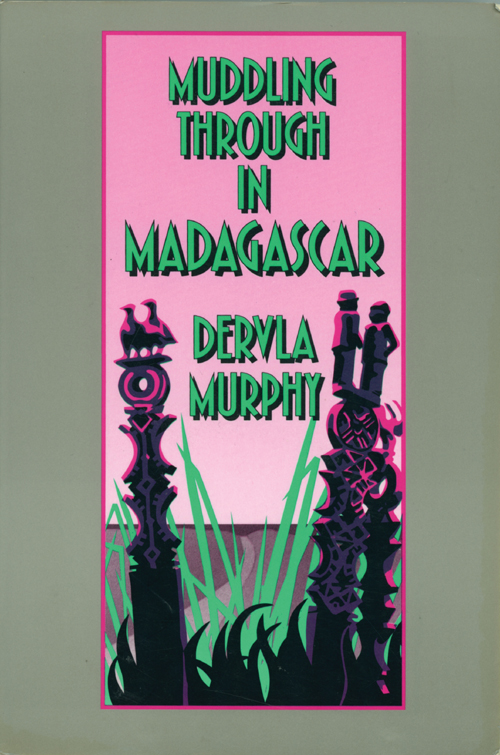
First published in 1989 by
The Overlook Press
141 Wooster Street
New York, NY 10012
www.overlookpress.com
Copyright 1985 by Dervla Murphy
All rights reserved. No part of this publication may be reproduced or transmitted in any form or by any means, electronic or mechanical, including photocopy, recording, or any information storage and retrieval system now known or to be invented without permission in writing from the publisher, except by a reviewer who wishes to quote brief passages in connection with a review written for inclusion in a magazine, newspaper, or broadcast.
ISBN 978-1-46830-567-8
To all our Malagasy friends
Those whose names we can remember,
Those whose names we have forgotten,
And those whose names we never knew.
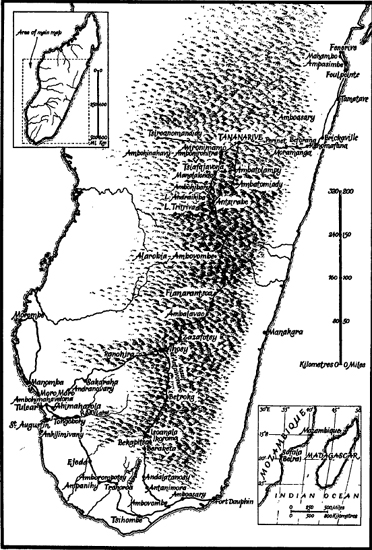
A Bit of History
Once upon a time about eighty million years ago the break-up of Gondwanaland left an isolated island (some 1,000 miles long and 300 miles across) lying 250 miles off East Africas coast. During this continental drift era, when Madagascar was slowly separating from Africa, Australasia, South America and the Indian Deccan, the highest forms of life were primitive placental and marsupial mammals. From these, on Madagascar, no large, vigorous, predatory creatures developed. Instead Evolution wandered down a peaceful byway, not being very inventive, which is why zoologists and botanists now describe the island as a living museum. Most of its plant and animal life is unique, though its geological structure and geographical features have much in common with Southern Africa. Fittingly, the coelacanth was first found in Madagascars deep surrounding waters, having survived there almost unchanged for many millions of years.
Despite countless man-hours of academic toil, no one is sure or ever likely to be exactly when Madagascars first settlers arrived. But it is certain that few fertile areas of the world remained so long uninhabited; the earliest archaeological evidence of human occupation dates from about AD 900. It is also certain that Malagasy culture has Malayo-Polynesian roots. The language belongs to the Malayo-Polynesian group though about twenty per cent of its modern vocabulary is Bantu, with a sprinkling of Sanskrit, English, French and Arabic.
At one time it was assumed that the proto-Malagasy had sailed straight across the southern Indian Ocean to Madagascar, a distance of almost 4,000 miles. Now the most widely accepted theory is that migrant traders, in large twin-hulled outrigger canoes, made the journey by comparatively easy stages: from Sumatra to the Andaman Islands, to Ceylon, South India, the Maldives, the Laccadives and so across the Arabian Sea to Socotra and finally (during the first century AD ?) to Azania, now known as Kenya and Tanzania. There they found empty spaces, a good climate, varied trading opportunities and a sparse, undeveloped population on whom it was easy to impose their own culture.
During the next few centuries according to this theory more and more Polynesians settled on the African coast, then gradually moved inland, introducing new food plants wherever they went: taro, yams, bananas, coconuts, breadfruit. This novel notion of growing food, instead of merely hunting and gathering it, contributed to a Bantu population explosion, one of the causes of the eventual settlement of Madagascar. Another cause was Arab domination, by the tenth century, of Indian Ocean trade.
The islands sporadic settlement extended over centuries, beginning perhaps as much as 1500 years ago with small groups establishing themselves on the north-west and west coasts. Larger groups came later and, having had more contact with the rapidly expanding Bantu, were less obviously Polynesian. These new arrivals settled on the south and east coasts, as well as among the original migrants. Madagascars mountainous and densely forested interior remained for long unexplored; it could be approached only through the valleys of the Onilahy, Tsiribihina and Betsiboka rivers, which run into the Mozambique Channel. Probably the first people to venture up those valleys and discover the high central plateau were the Vazimba, a tall, strong, dark-skinned tribe with curly though not frizzy hair. The second, main migration apparently pushed these early settlers inland. Then, much later, they were pushed west again when the Merina arrived on the plateau. They ended up in the Bemaraha Mountains as troglodytes who food-gathered in the forest; now the majority live in primitive hamlets on remote heights. The Merina tradition that the Vazimba are indigenous to Madagascar has been rejected by anthropologists.
The exact origin of the Merina, the largest and most enterprising of Madagascars eighteen main tribes, remains a mystery. Scholars offer contradictory explanations for their light brown skin, straight black hair and impeccable Polynesian features. Some argue that they are descended from Malayan or Javanese migrants who landed on the east coast of Madagascar no more than seven or eight centuries ago and were never in the African melting-pot. Others maintain that their ancestors were among the earliest groups to settle in Africa, when there were few Bantu around, and that they married only within the tribe making it taboo to do otherwise during all those centuries when later settlers were being slightly miscegenatious. There are several other theories with which I wont detain us. The late arrival theory, favoured by the Merina themselves, seems to me the most plausible. But whenever and from wherever they arrived, the pioneer Merina evidently found it necessary, on reaching the plateau, to combine intermarriage with military conquest a popular formula, throughout Malagasy history, for settling territorial disputes. The minority of Merina who do not look pure Polynesian tend to be tallish and rather dark with slightly wavy hair.
The Polynesian/African genetic experiment had happy results, unlike many inter-racial mixes. When the proto-Malagasy settled on the Great Red Island they had already become, despite marked variations in physique, colouring and features, a homogeneous people united by their language, their animist religion and a distinctive, stable culture. On the practical level they had retained three important characteristics of their Polynesian heritage: highly developed fishing skills, rectangular wooden huts built on stilts in rainy regions and the ecologically disastrous technique of slash-and-burn rice cultivation. In Africa they had learned about animal husbandry and they brought to Madagascar the ancestors of those huge herds of magnificently horned hump-backed zebu which still dominate the social and religious rituals of millions. These animals have become a symbol of Malagasy culture; they appear on the coinage, the stamps and many printed cotton skirts and lambas. (The lamba is sometimes worn as a shawl and sometimes, by both men and women, as a sarong.)
Madagascar was not discovered by Europeans until 10 August 1500 when an off-course Portuguese ship sighted an unexpected mass of land. Gradually the sailors realised that it was an unknown island and named it St Lawrences Island, after the saint of the day. Portuguese geographers then decided that this must be the Arabs Isle of the Moon and the Madagascar of which Marco Polo had heard rumours as he crossed Arabia.
No sooner discovered than attacked. In 1506 and 1507 the scattered Arab trading settlements along Madagascars northwest coast were destroyed by the Portuguese, during a relentless campaign against their main rivals in the spice trade. Subsequently a few half-hearted efforts were made to explore the Malagasy coasts. But it quickly became obvious that the island was without precious metals, precious stones or rare spices, that the coastal fevers were exceptionally virulent and that the natives reactions to
Font size:
Interval:
Bookmark:
Similar books «Muddling through in Madagascar»
Look at similar books to Muddling through in Madagascar. We have selected literature similar in name and meaning in the hope of providing readers with more options to find new, interesting, not yet read works.
Discussion, reviews of the book Muddling through in Madagascar and just readers' own opinions. Leave your comments, write what you think about the work, its meaning or the main characters. Specify what exactly you liked and what you didn't like, and why you think so.


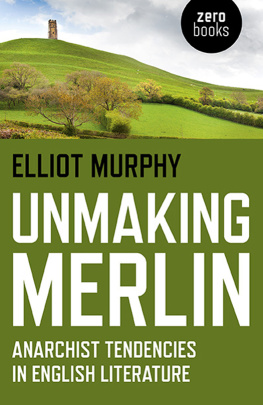

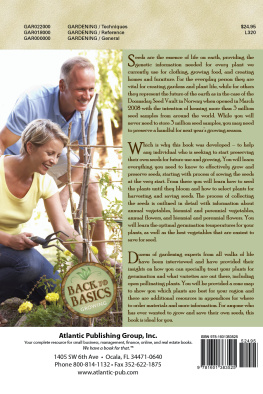
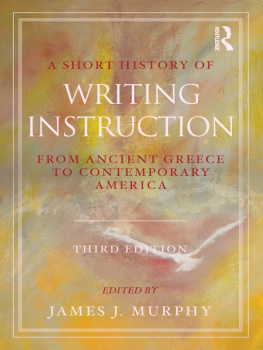



![Harry Turtledove - Worlds that werent : [novellas of alternate history]](/uploads/posts/book/79050/thumbs/harry-turtledove-worlds-that-weren-t-novellas.jpg)

